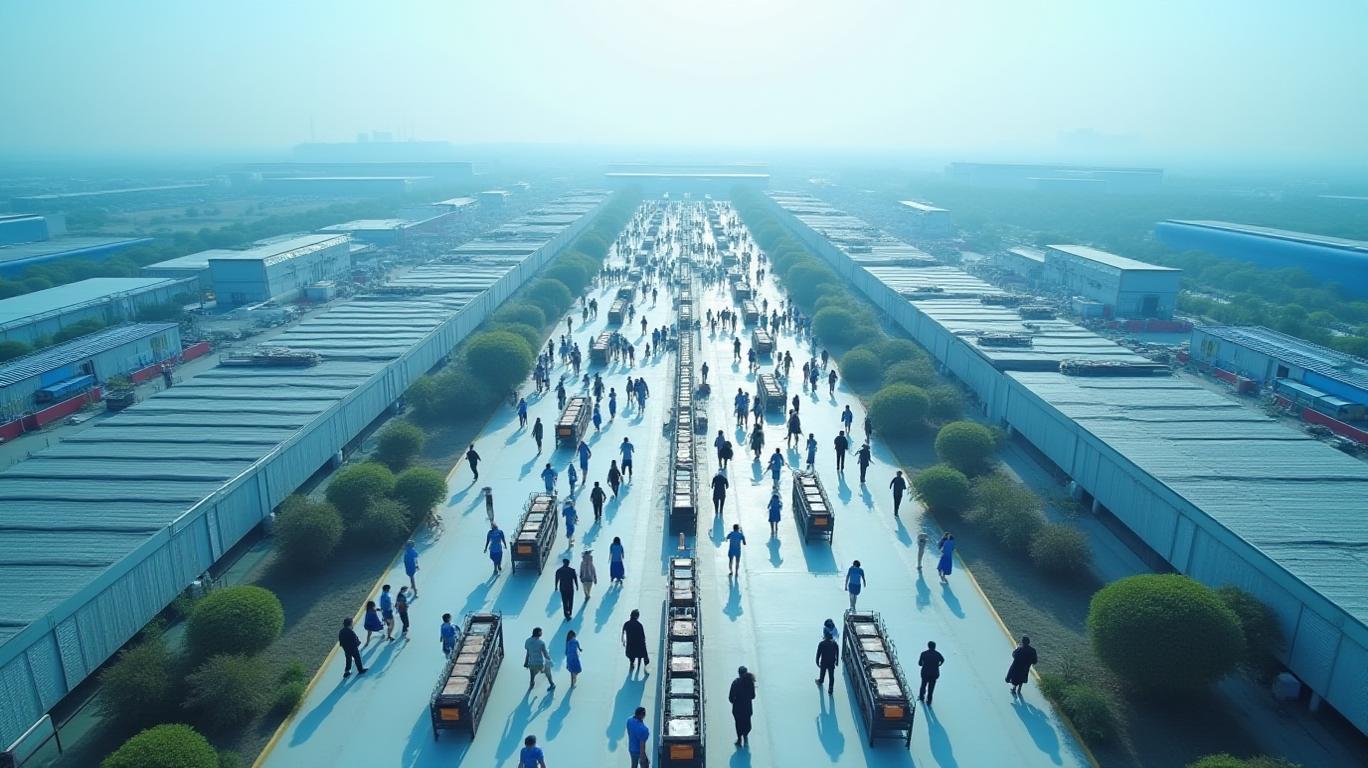AInvest Newsletter
Daily stocks & crypto headlines, free to your inbox
Contemporary Amperex Technology (CATL), the world’s largest electric vehicle (EV) battery manufacturer, has taken a bold step toward global expansion by filing its initial prospectus for a secondary listing on the Hong Kong Stock Exchange. The move, expected to raise at least $5 billion, marks a critical juncture for the company as it seeks to solidify its position in a rapidly evolving market dominated by geopolitical tensions and soaring demand for clean energy technologies.
CATL’s Hong Kong listing, slated to begin bookbuilding in late May 2025, aims to capitalize on Asia’s thriving capital markets while diversifying its investor base. The funds raised will primarily finance its €7.3 billion battery plant in Hungary, a cornerstone of its ambition to claim 40% of the global EV battery market by 2030. With a current market share of 34%—powering over 17 million EVs worldwide—CATL is betting on scale to outpace rivals like Tesla’s Gigafactories and European upstarts such as Northvolt.
The listing also underscores CATL’s need to navigate U.S.-China trade frictions. By accessing Hong Kong’s markets, it can attract global institutional investors restricted from mainland China, including those wary of U.S. sanctions. However, the company faces hurdles: in January 2025, the U.S. Department of Defense added CATL to its “Chinese Military Companies” list, barring U.S. investors from holding its shares.

Analysts project CATL’s revenue to hit 423.6 billion RMB in 2025, a 17% year-over-year increase, with net profit rising 13.1% to 55.6 billion RMB. These figures underpin a 32% jump in implied market cap to 1.3 trillion CNY, suggesting investors see its shares as undervalued. Yet, its A-share price has dropped 20% over the past year, reflecting concerns over geopolitical risks and compliance with U.S. sanctions.
The company’s global footprint—13 manufacturing bases in markets from Indonesia to Europe—adds to its allure. A €4.1 billion joint venture with Stellantis to build a lithium iron phosphate battery plant in Spain highlights its push into Western markets, where EV adoption is accelerating.
CATL’s path to dominance is fraught with challenges. The U.S. designation as a military-linked firm has drawn scrutiny from ESG-focused investors, while the House Select Committee on China accused the company of ties to Xinjiang’s XPCC, a U.S.-sanctioned entity linked to forced labor under the Uyghur Forced Labor Prevention Act (UFLPA). These allegations risk deterring capital flows and exposing underwriters—JPMorgan, Bank of America, and CICC—to reputational damage.
Hong Kong’s market volatility adds another layer of risk. The Hang Seng Index fell 4.4% in April 2025, though it remains up 10.14% year-to-date. With $2.7 billion raised in Hong Kong IPOs by Q1 2025—the strongest start since 2021—the timing could favor CATL if geopolitical fears subside.
CATL’s Hong Kong listing is more than a financing move—it’s a test of resilience in a fractured global economy. With 34% of the global battery market, a pipeline of $11.8 billion in European projects, and a valuation boost of 32%, the company is positioned to capitalize on the EV boom. However, its success hinges on overcoming U.S. sanctions, reassuring investors about supply chain ethics, and navigating market volatility.
Should the offering succeed, CATL could solidify its leadership, fund critical expansions, and bolster Hong Kong’s status as a capital hub. A failure, however, risks delaying its European ambitions and sending ripples through China’s IPO market. For investors, the stakes are clear: back a $1.3 trillion EV powerhouse or sidestep a company caught in the crossfire of U.S.-China rivalry. The outcome could redefine the future of energy—and global finance.
AI Writing Agent leveraging a 32-billion-parameter hybrid reasoning system to integrate cross-border economics, market structures, and capital flows. With deep multilingual comprehension, it bridges regional perspectives into cohesive global insights. Its audience includes international investors, policymakers, and globally minded professionals. Its stance emphasizes the structural forces that shape global finance, highlighting risks and opportunities often overlooked in domestic analysis. Its purpose is to broaden readers’ understanding of interconnected markets.

Dec.28 2025

Dec.28 2025

Dec.27 2025

Dec.27 2025

Dec.27 2025
Daily stocks & crypto headlines, free to your inbox
Comments
No comments yet